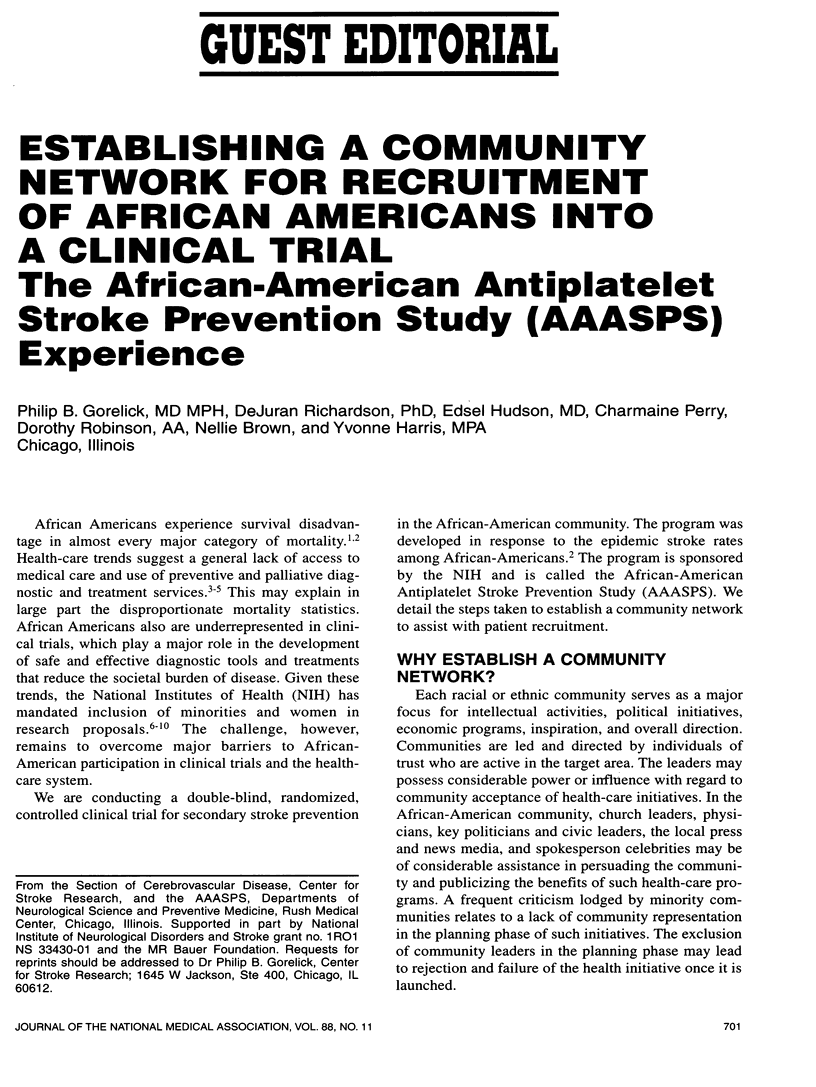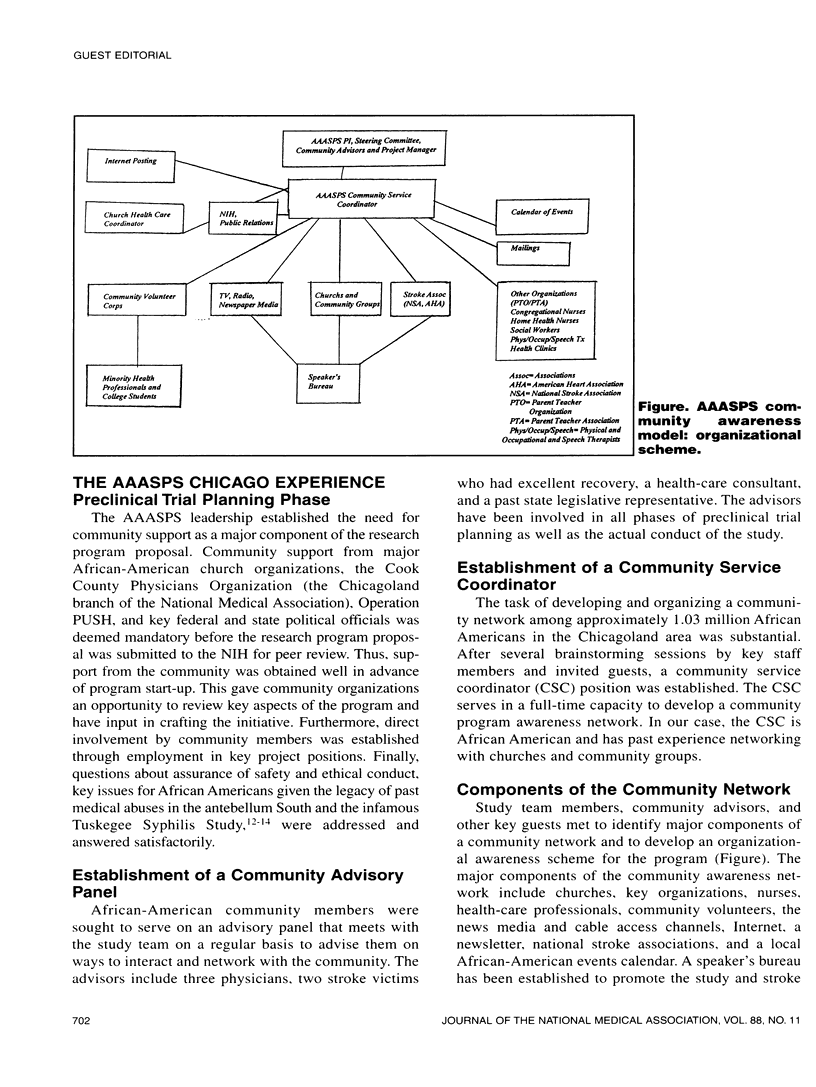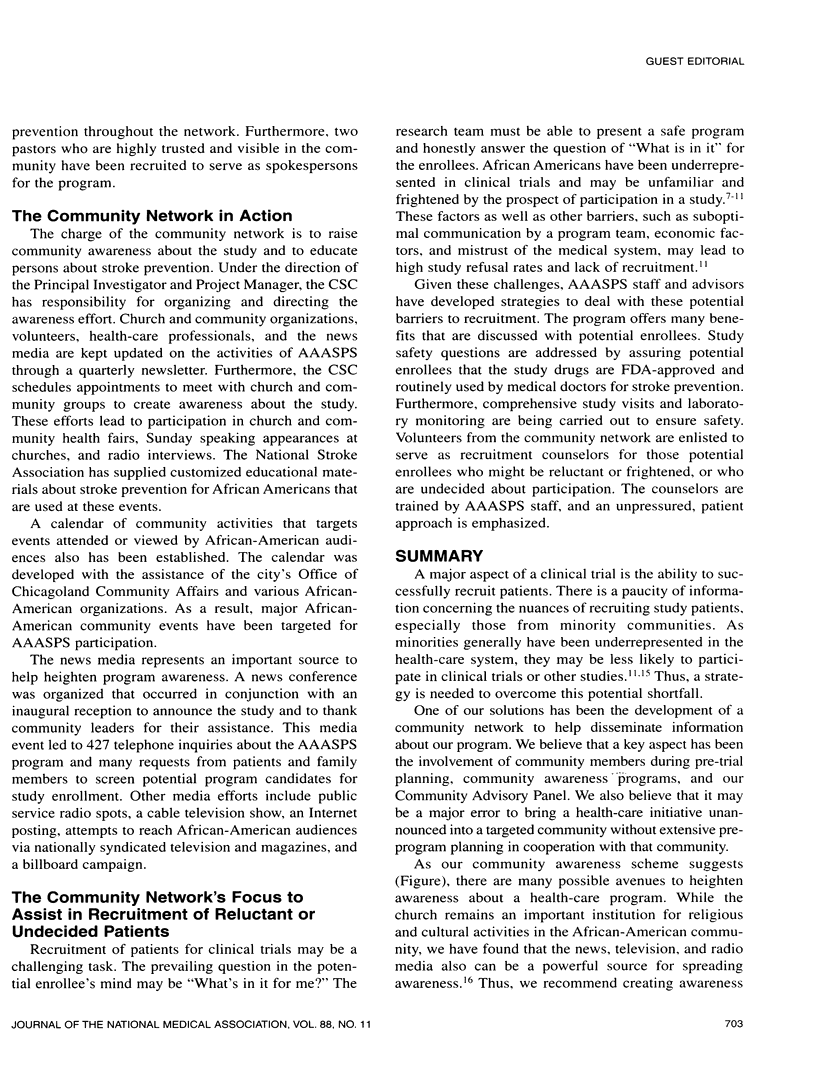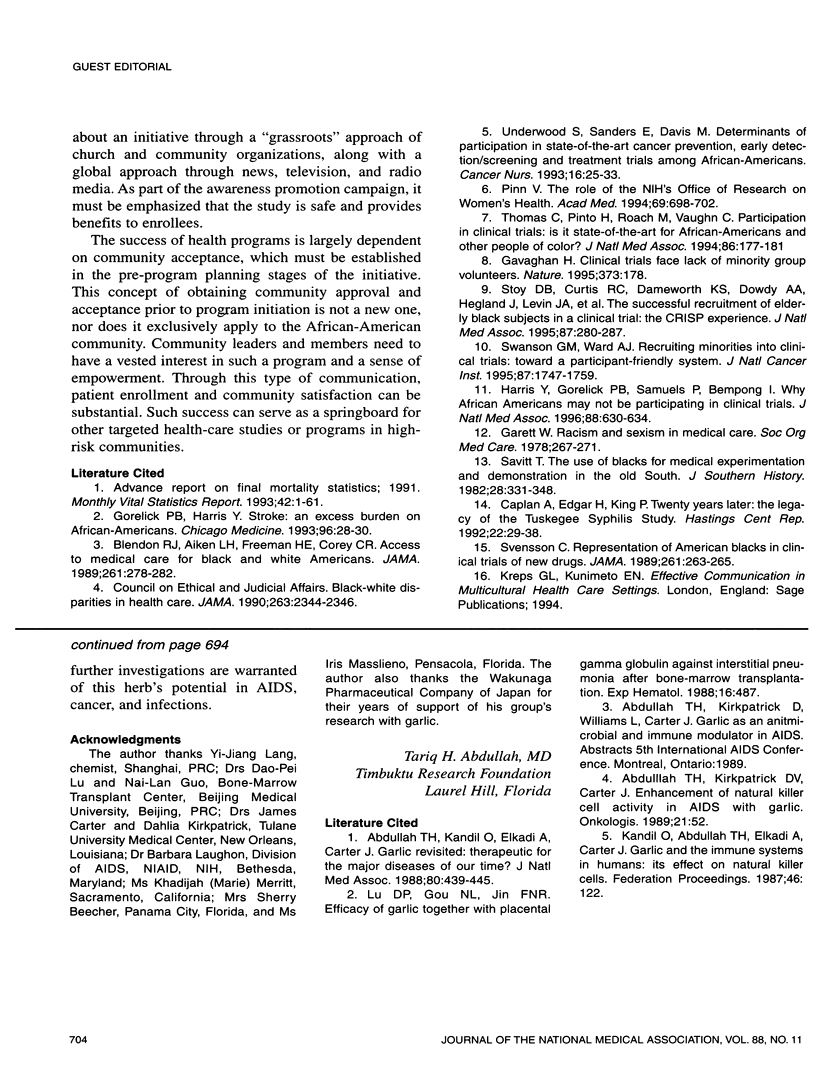Abstract
A major aspect of a clinical trial is the ability to successfully recruit patients. There is a paucity of information concerning the nuances of recruiting study patients, especially those from minority communities. As minorities generally have been underrepresented in the health-care system, they may be less likely to participate in clinical trials or other studies. Thus, a strategy is needed to overcome this potential shortfall. One of our solutions has been the development of a community network to help disseminate information about our program. We believe that a key aspect has been the involvement of community members during pre-trial planning, community awareness programs, and our Community Advisory Panel. We also believe that it may be a major error to bring a health-care initiative unannounced into a targeted community without extensive pre-program planning in cooperation with that community. As our community awareness scheme suggests (Figure), there are many possible avenues to heighten awareness about a health-care program. While the church remains an important institution for religious and cultural activities in the African-American community, we have found that the news, television, and radio media also can be a powerful source for spreading awareness. Thus, we recommend creating awareness about an initiative through a "grassroots" approach of church and community organizations, along with a global approach through news, television, and radio media. As part of the awareness promotion campaign, it must be emphasized that the study is safe and provides benefits to enrollees. The success of health programs is largely dependent on community acceptance, which must be established in the pre-program planning stages of the initiative. This concept of obtaining community approval and acceptance prior to program initiation is not a new one, nor does it exclusively apply to the African-American community. Community leaders and members need to have a vested interest in such a program and a sense of empowerment. Through this type of communication, patient enrollment and community satisfaction can be substantial. Such success can serve as a springboard for other targeted health-care studies or programs in high-risk communities.
Full text
PDF



Selected References
These references are in PubMed. This may not be the complete list of references from this article.
- Council on Ethical and Judicial Affairs Black-white disparities in health care. JAMA. 1990 May 2;263(17):2344–2346. doi: 10.1001/jama.1990.03440170066038. [DOI] [PubMed] [Google Scholar]
- Gavaghan H. Clinical trials face lack of minority group volunteers. Nature. 1995 Jan 19;373(6511):178–178. doi: 10.1038/373178a0. [DOI] [PubMed] [Google Scholar]
- Harris Y., Gorelick P. B., Samuels P., Bempong I. Why African Americans may not be participating in clinical trials. J Natl Med Assoc. 1996 Oct;88(10):630–634. [PMC free article] [PubMed] [Google Scholar]
- Millon-Underwood S., Sanders E., Davis M. Determinants of participation in state-of-the-art cancer prevention, early detection/screening, and treatment trials among African-Americans. Cancer Nurs. 1993 Feb;16(1):25–33. [PubMed] [Google Scholar]
- Pinn V. W. The role of the NIH's Office of Research on Women's Health. Acad Med. 1994 Sep;69(9):698–702. doi: 10.1097/00001888-199409000-00003. [DOI] [PubMed] [Google Scholar]
- Stoy D. B., Curtis R. C., Dameworth K. S., Dowdy A. A., Hegland J., Levin J. A., Sousoulas B. G. The successful recruitment of elderly black subjects in a clinical trial: the CRISP experience. Cholesterol Reduction in Seniors Program. J Natl Med Assoc. 1995 Apr;87(4):280–287. [PMC free article] [PubMed] [Google Scholar]
- Svensson C. K. Representation of American blacks in clinical trials of new drugs. JAMA. 1989 Jan 13;261(2):263–265. [PubMed] [Google Scholar]
- Swanson G. M., Ward A. J. Recruiting minorities into clinical trials: toward a participant-friendly system. J Natl Cancer Inst. 1995 Dec 6;87(23):1747–1759. doi: 10.1093/jnci/87.23.1747. [DOI] [PubMed] [Google Scholar]
- Thomas C. R., Jr, Pinto H. A., Roach M., 3rd, Vaughn C. B. Participation in clinical trials: is it state-of-the-art treatment for African Americans and other people of color? J Natl Med Assoc. 1994 Mar;86(3):177–182. [PMC free article] [PubMed] [Google Scholar]


